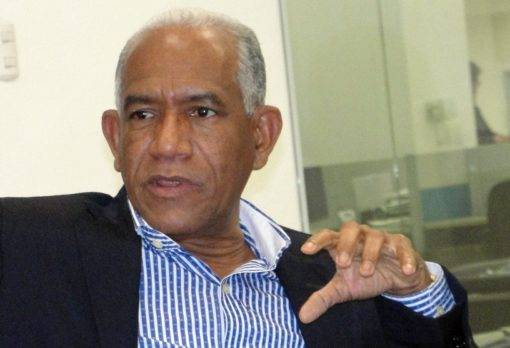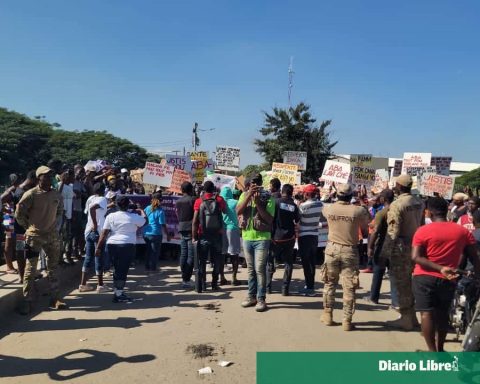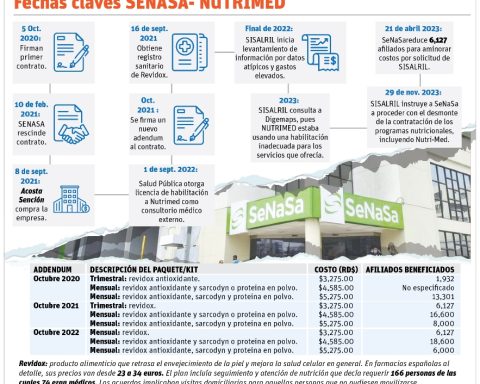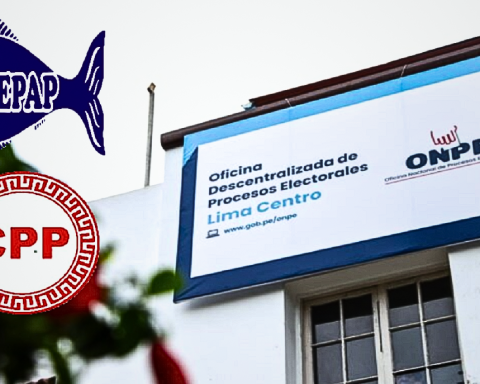I. Preliminary words
Fiscal policy plays a significant role in economic development, social situation and development in general. Its effects and impacts can benefit or harm the development of families, individuals, companies, as well as international competitiveness and sustainability.
Fiscal policy, through the State’s spending, revenue and financing policy, constitutes a fundamental pillar for guaranteeing the fulfilment of citizens’ rights. In addition to serving as a basis for guaranteeing the fundamental rights of individuals, it must fulfil functions in terms of stability and economic growth, income distribution, equity, social cohesion, resource allocation and, as a new issue of great relevance, support environmental sustainability.
You can read: President of PARLACEN affirms that the illegal migration of Haitians presents a chaotic and inhumane scenario
. 47 years ago, in 1977, the economists Edward C. Prescott, American, and Finn Kydland, Norwegian, published an article in a journal of political economy, under the title: “Rules instead of discretion: the inconsistency of optimal plans” (free translation), which dealt with the theory of optimal control to analyze dynamic systems and decision making.
The authors argue that instead of discretionary policy, it is preferable to rely on some policy rules. This approach, which seems to be part of the arguments in favour of central bank policy and monetary rules, has also been taken as an argument to justify fiscal policy rules.
In 1998, Hungarian economist George Kopits and American economist Steven A. Symansky, in a paper for the IMF, studied various aspects of fiscal policy rules, defining what they consist of, their benefits and disadvantages, and trying to identify sensible fiscal policy rules that can be successful. According to Kopits and Symansky, a fiscal rule is a permanent restriction on fiscal policy that is expressed in an indicator of fiscal results, such as: debt level, fiscal deficit or any type of expenditure.
The experience in developing countries, such as the Dominican Republic, characterized by a context of weak institutionality and a tradition of non-compliance with laws, seems to show that fiscal rules tend to be inconsistently applied and, therefore, ineffective in ensuring fiscal discipline.
II. General Reflections
On August 5, the Executive Branch enacted Law 35-24 on Fiscal Responsibility of State Institutions (LRF). This law, which aims to “establish the conditions for achieving prudent, responsible and transparent financial management of the State” (Art. 1), can be considered a good and positive statement of intent by the Government of President Luis Abinader, who in his first four years of management has managed budgetary resources amounting to RD$5.39 billion.
. We must hope that the approved LRF is a genuine declaration of intent by President Luis Abinader’s second government to strengthen fiscal discipline and that it does not become a “fiscal rule as a signal” that only seeks to ingratiate itself with public opinion and gain likes.
I have the impression that the LRF 35-24 was not subjected to a process of technical analysis and in-depth public discussion, in which the general guidelines of what the Government and society can aspire to in terms of fiscal reform and discipline were debated. Although since 2014 I have had references to a LRF project that was discussed in Congress. For a long time I have been making efforts to find out the content of the LRF draft submitted to the Legislative Branch by President Luis Abinader, as well as the approved and promulgated version of said law, without positive results. It has only been a few days since he was able to have it.
9. It seems to me that the provisions on the scope of application of the fiscal rules, as well as some definitions on the institutional classification of the different subsectors, areas and subareas of the public sector that will be subject to the provisions established by LRF 35-24, show certain levels of confusion, which could present problems when applying the provisions of the fiscal responsibility framework of the Law.
10. An example of what is stated in the previous paragraph is that, although Article 2 of the LRF on its scope of application states that “it is of general application in the national territory”, it does not specify which subsectors, areas or subareas of the public sector are subject to the established fiscal rules.
Similarly, in Article 3 on definitions, numeral 5, the National General Government is defined, including local governments.
11. According to the additions to the Budget Classifiers in the Sigef, updated to August 20, 2024, the institutional classifier does not include the “National General Government” subarea, but rather the “General Government” subarea, which is made up of the central Government and local Governments, which are the two levels of government that exist in the country.
The first, with national jurisdiction and the second, with local or municipal jurisdiction. The institutional classification added to the Sigef is largely aligned with what is established in the IMF’s 2014 Public Finance Statistics Manual on institutional units and sectors of the economy, as well as with the institutional coverage and sectorization of the public sector in the aforementioned Manual.
III. Fiscal Responsibility Framework of the LRF 35-24
12. Chapter II of LRF 35-24 details the main rules of the Fiscal Responsibility Framework (MRF) to be applied. Article 4 defines the medium-term debt target. In specific terms, this rule mandates that the ratio between the total debt balance and the nominal GDP of the “General National Government” as of December 31, 2035, should not exceed 40.0%.
13. Article 5 provides a primary expenditure (GP) growth rule for the “National General Government”, consisting of the fact that in no fiscal year its growth rate exceeds the projected average annual inflation rate by more than 3.0%.
14. When the debt target is achieved, the GP growth rule may be adjusted annually, maintaining the debt/GDP ratio of 40% (Paragraph I, Art. 5).
The GP rule may also be adjusted when there is a permanent and structural increase in tax revenues, always maintaining the 40% debt/GDP ratio (Paragraph II, Art. 5). Paragraph II of Art. 5 provides that increases in tax revenues due to changes in current legislation before achieving the debt target must be supported by technical analysis.
15. Paragraphs IV and V of Art. 5 establish the explanatory report to the National Congress on the adjustment of the GP rule, as well as the macroeconomic forecasts for the calculation of the parameters of the fiscal rules and their inclusion in the macroeconomic programming of the MEPyD, prepared according to Law 498-06.
IV. Specific Reflections on the MRF
As can be seen, the fiscal responsibility framework defined in Law 35-24 is limited to two rules: The first establishes the objective to be achieved in the next 10 years in terms of the ratio between the total debt balance and the nominal GDP of 40% and the second refers to the annual growth of primary expenditure up to a maximum of 3.0% above the projected average inflation rate.
The latter is crucial to achieving the first objective.
. The analysis of the content of the LRF 35-24 reveals some vagueness and limitations that could hinder its full implementation. The debt/GDP ratio rule depends on the general balance of fiscal accounts, especially of the Non-Financial Public Sector (SPNF) and, to a different extent, on the results of organizations such as the Central Bank, which impact the General State Budget (PGE) through transfers to cover their deficits. Under the assumption of non-use of inorganic financing, the deficits/financing needs of the PGE can be covered by three essential sources: increased tax collections, sale of state assets and borrowing. At no point in the LRF 35-24 is it defined how and in what way the debt balance objective will be achieved without inflating current GDP.
The budget policy defined by the Ministry of Finance for 2025 foresees a deficit of 3.1% of GDP and a gross financing need of RD$361,387.4 million (US$5,700.3 million) and net financing of RD$253,689.2 million (US$4,000.1.6 million). This scenario assumes a growth in primary expenditure of 2.7% compared to the amount budgeted for 2024, with an amount of RD$1,186.7 million, of which 84.9% would be current expenditure and 15.1% capital expenditure.
If no changes are made that significantly increase tax collections or significantly reduce public spending; starting in 2026, with primary spending growing at 7%, according to the rule established in Law 35-24 and an increase of 9.2% in tax revenues, average annual deficits of -2.4% of GDP would be generated during the years 2026-2028, which, instead of reducing, would increase net borrowing needs, which in a scenario of potential average economic growth of 5% could raise the debt/GDP ratio to 48.4% at the end of the current Government period in 2028.
Between 2021 and 2023, the central government’s average annual primary expenditure has been 15.6% of GDP and has increased at an average annual rate of 9.8%. For 2024, primary expenditure represents 16.0% of GDP, with an increase of 11.7% compared to the previous year. Between 2021 and 2023, average current primary expenditure has been 84% of the total and capital expenditure 16%. In this year, budgeted current primary expenditure is 83.7% of the total and capital expenditure 16.3%. It should be noted that a weakness of the LRF 35-24 is that the primary expenditure growth rule does so in a generic manner, when it should have specified current primary expenditure so as not to affect the investment expenditure part.
The submission to the National Congress, the approval and the promulgation by the Government headed by President Luis Abinader of Law-35-24 of Fiscal Responsibility, must be assumed by society as a good and positive declaration of commitment to a management based on rules and not on the discretion of the fiscal policy of the nascent second government of President Luis Abinader, who in his first four years of management (2020-2024), managed a total of budgetary resources amounting to RD$5.39 billion (US$95,060.7 million).
22. Government actions in the coming months and years will have to determine whether the Fiscal Responsibility Law enacted at the beginning of August of this year is a genuine declaration of intent and action by President Luis Abinader’s second government to strengthen fiscal discipline or whether it is only a “fiscal rule as a signal” that only seeks to ingratiate itself with public opinion, international investors and lenders (investment grade), and gain likes on social media.


















